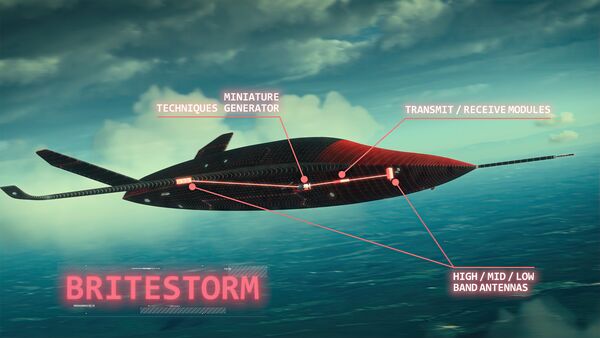
BriteStorm is a low-SWaP EA payload designed for integration into attritable UAVs and other launched effects. (Leonardo)
The UK-based electronic warfare (EW) business of Leonardo has lifted the curtain on a new platform-agnostic stand-in jammer payload designed for integration into attritable unmanned aerial vehicles (UAVs) and other launched effects.
Known as BriteStorm, the low-size, weight, and power (SWaP) electronic attack (EA) payload has been developed in response to growing interest in the employment of stand-in jammers as part of a suppression of enemy air defence (SEAD) ‘toolbox'. Unveiled at the Association of the United States Army (AUSA) 2024 event in Washington, DC on 14 October, BriteStorm has already completed flight trials with the UK Royal Air Force (RAF).
Stand-in jamming delivers SEAD effects by using an uncrewed air platform or launched effects vehicle to deploy an EA payload inside the lethal engagement envelope of an integrated air-defence system. Jamming effects – both noise and deception – are employed to disrupt and degrade early warning, surveillance, and weapon control radars and so provide a screen of protection for following ‘main force' platforms.
The development of BriteStorm has leveraged miniaturised Digital Radio Frequency Memory (DRFM) technology already embodied in Leonardo's BriteCloud expendable active countermeasure device. Jamming effects – both noise and deception techniques – are produced by an advanced Miniature Techniques Generator (MTG) weighing 2.5 kg.
Alongside the core MTG, a standard BriteStorm fit also incorporates transmit/receive modules and antennas matched to the specific platform. While the MTG covers the NATO A-J band, actual frequency coverage for a given platform will be conditioned by the selected antenna configuration.
Looking to read the full article?
Gain unlimited access to Janes news and more...
